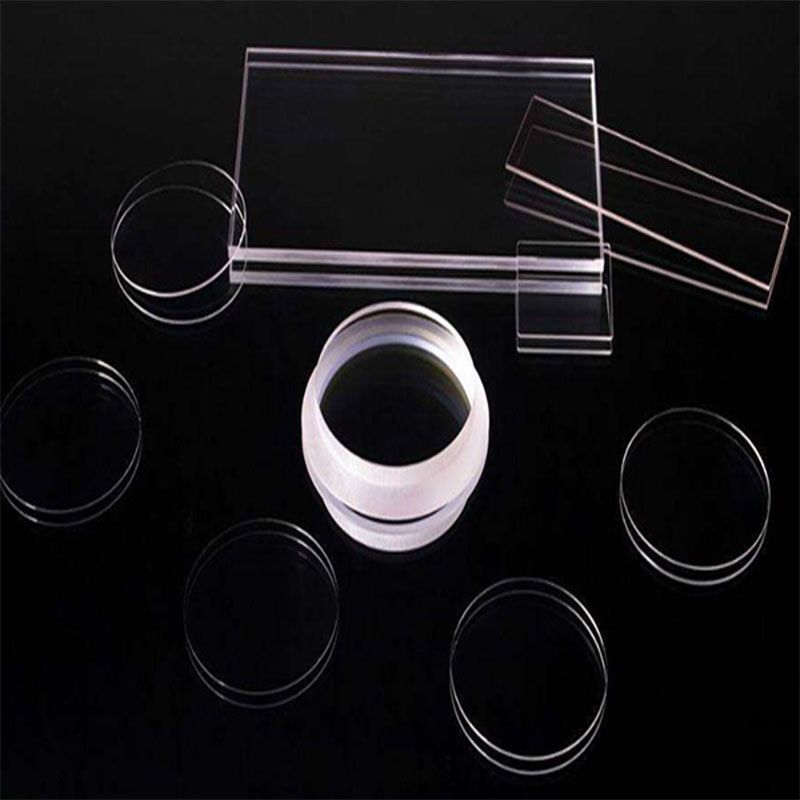
An optical window is a flat optical transparent plate, usually designed to achieve maximum transmission and minimal reflection and absorption within a specific wavelength range. These are typically used to protect optical systems and electronic sensors from external environmental influences. Since the window does not introduce light power into the system, it should be selected based on the transmission performance of the material, optical surface specifications, and mechanical properties suitable for your usage. In visible and near-infrared light, fused silica and BK7 are common optical materials. In longer wavelength infrared optics, semiconductor materials such as calcium fluoride, zinc selenide, silicon, and germanium are also used.
An optical window allows light to pass through while blocking harmful elements. AR coatings are often used to reduce reflection and increase transmission. Anti-reflective coatings are sometimes applied to both sides of a window, and sometimes to just one side. These are typically used to protect optical systems and electronic sensors from external environmental influences. Since the window does not bring the optical focus into the system, it is selected based on the transmission characteristics of the material, optical surface specifications, and the mechanical properties that match your application. Optical windows are applied in analytical chemistry, materials research, medical research, food science, applied physics, environmental science, academic research, light rail systems, artificial intelligence, manufacturing, aerospace, and many other applications and fields.
Excellent light transmittance: Optical glass windows have good light transmittance, allowing light to pass freely through without significantly affecting the imaging quality of the optical system.
High mechanical strength: Optical glass windows have high mechanical strength and hardness, capable of withstanding certain pressures and impacts, thus protecting the internal components of optical systems from external environmental influences.
Corrosion resistance: Optical glass windows usually have good corrosion resistance, able to resist chemical erosion, maintaining the cleanliness and transparency of the optical surfaces.
Good stability: Optical glass windows exhibit good stability under environmental conditions such as temperature changes and humidity variations, making them less prone to deformation or discoloration.
Optical glass windows are a common optical component, usually employed for protection, light transmittance, and imaging functions within optical systems. Made from optical glass materials, they possess excellent optical characteristics and mechanical properties, making them suitable for various optical application fields.
Optical instruments: Optical glass windows are widely used in telescopes, microscopes, lasers, and other optical instruments to protect internal components of the optical systems and enable light transmittance.
Optical sensors: In devices such as optical sensors and camera lenses, optical glass windows can protect lenses and filters.
Industrial inspection: In industrial production, optical glass windows can be used in laser measurement and optical inspection applications to ensure measurement accuracy and stability.
Medical equipment: In medical imaging devices and laser treatment instruments, optical glass windows can provide clear imaging and light transmittance effects.
The manufacturing of optical glass windows usually requires precise processing techniques, including cutting, polishing, and coating, to ensure the smoothness and accuracy of the surface of the window panes. When designing, factors such as the size, thickness, and material selection of the window panes need to be considered to meet specific optical requirements and system design. For some special applications, optical glass windows may require special coating treatments, such as anti-reflective coatings or hard coatings. Overall, optical glass windows, as common components in optical systems, provide important protection and light transmittance functions, offering reliable and stable solutions for various optical applications. Their excellent optical characteristics and mechanical properties make them an indispensable part of optical system design.